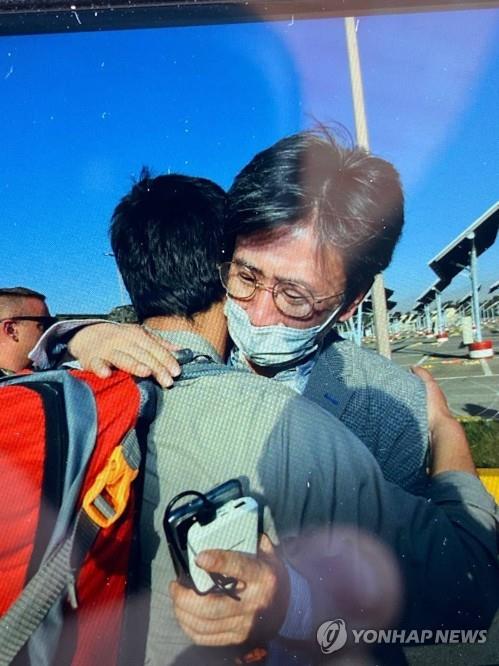- California Assembly OKs highest minimum wage in nation
- S. Korea unveils first graphic cigarette warnings
- US joins with South Korea, Japan in bid to deter North Korea
- LPGA golfer Chun In-gee finally back in action
- S. Korea won’t be top seed in final World Cup qualification round
- US men’s soccer misses 2nd straight Olympics
- US back on track in qualifying with 4-0 win over Guatemala
- High-intensity workout injuries spawn cottage industry
- CDC expands range of Zika mosquitoes into parts of Northeast
- Who knew? ‘The Walking Dead’ is helping families connect
Kabul airport blast occurred at site used during Korea’s evacuation: source
The site of the deadly attack on the Kabul airport was the same gate that South Korea used days earlier to evacuate Afghan co-workers and their family members, a source said Friday.
The suicide bomb attack at the airport’s Abby Gate on Thursday has left scores of Afghans and U.S. troops dead and many others wounded. South Korea used the gate Monday to bring 26 Afghans into the airport as part of the operation to evacuate 390 Afghans.
Seoul’s evacuation team is known to have chosen the gate, as access to most of the other gates remained blocked or was riskier, a decision made in consultation with U.S. troops in charge of security inside the airport.
The latest explosion at the airport suggested that if Seoul’s evacuation mission had been delayed by several days, the Afghan evacuees, as well as its diplomatic and other staffers, would have been in danger.
Seoul officials in Kabul are said to have obtained intelligence on the possibility of terror attacks at the airport Monday night.
Meanwhile, Minister Counselor Kim Il-eung of the now-closed Korean Embassy in Kabul told reporters that the evacuation mission was marked by a harrowing 14-hour wait in sweltering, cramped buses Tuesday to gain access to the airport hindered by Taliban checkpoints.
Kim, who oversaw the mission, choked up briefly, as he recounted the evacuees anxiously waiting amid fear that they could be denied access to the airport, the only gateway for them to flee Taliban rule by air.
“They were inside the buses for 14 or 15 hours with no air conditioners, and they could not see anything through the darkly tinted windows,” he said in a virtual interview. “Due to the sweltering heat, children cried inside, but they waited until dawn. That was the toughest moment.”
When all were finally allowed to enter the airport and disembark, there was still no food and no water to provide to the evacuees who looked extremely exhausted, Kim said.
Kim was among the few Korean personnel, who returned to Kabul after all embassy staff were evacuated to Qatar for safety upon the Taliban’s return to power.
Asked whether his own family members were worried about his safety, Kim tersely said, “I didn’t tell them as they would end up feeling worried.”

Minister Counselor Kim Il-eung of the South Korean Embassy in Kabul hugs an Afghan as he leads an evacuation mission, in this undated photo, released on Aug. 25, 2021, by the foreign ministry. (PHOTO NOT FOR SALE) (Yonhap)











